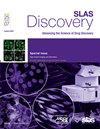Combinatorial screen of targeted agents with the PI3K inhibitors inavolisib, alpelisib, duvelisib, and copanlisib in multi-cell type tumor spheroids
IF 2.7
4区 生物学
Q2 BIOCHEMICAL RESEARCH METHODS
引用次数: 0
Abstract
Dysregulation of the phosphatidylinositol 3-kinase (PI3K) pathway is a key contributor to cancer, making PI3K inhibitors a promising approach for targeted therapy. The selectivity of available inhibitors varies across different PI3K isoforms. Alpelisib and inavolisib are selective for the α-isoform, while duvelisib targets the δ- and γ-isoforms, and copanlisib is a pan-PI3K inhibitor, active against all isoforms. This study investigated the activity of these four PI3K inhibitors in combination with other targeted agents using multi-cell type tumor spheroids composed of 60% malignant cells, 25% endothelial cells, and 15% mesenchymal stem cells. Twenty-nine tumor spheroid models were evaluated, including twenty-six patient-derived cancer cell lines from the NCI Patient-Derived Models Repository and three established cell lines from the NCI-60 human tumor cell line panel. Additive and/or synergistic effects were observed with alpelisib or inavolisib or copanlisib in combination with a RAS/MEK/ERK pathway inhibitor, either selumetinib (MEK), ravoxertinib (ERK 1/2), or tovorafenib (DAY101, RAF). Combinations of each of these three PI3K inhibitors with the KRAS mutation specific inhibitors MTRX1133 (KRAS G12D) or sotorasib (KRAS G12C) had selective activity in cell lines harboring the corresponding target. Lastly, combination effects were observed from vertical inhibition of the PI3K/AKT/mTOR pathway with a PI3K inhibitor in combination with either the mTORC1/2 inhibitor sapanisertib or an AKT inhibitor, ipatasertib or afuresertib.
靶向药物与PI3K抑制剂inavolisib、alpelisib、duvelisib和copanlisib在多细胞型球状肿瘤中的联合筛选
磷脂酰肌醇3-激酶(PI3K)通路的失调是癌症的一个关键因素,使PI3K抑制剂成为一种有希望的靶向治疗方法。可用抑制剂的选择性在不同的PI3K亚型中有所不同。Alpelisib和inavolisib对α-亚型具有选择性,duvelisib对δ-和γ-亚型具有选择性,而copanlisib是一种泛pi3k抑制剂,对所有亚型都有活性。本研究利用由60%恶性细胞、25%内皮细胞和15%间充质干细胞组成的多细胞型肿瘤球体,研究了这四种PI3K抑制剂与其他靶向药物联合的活性。29个肿瘤球体模型被评估,包括来自NCI患者衍生模型库的26个患者衍生的癌细胞系和来自NCI-60人类肿瘤细胞系面板的3个已建立的细胞系。alpelisib或inavolisib或copanlisib与RAS/MEK/ERK途径抑制剂,selumetinib (MEK), ravoxertinib (ERK 1/2)或tovorafenib (DAY101, RAF)联合使用时观察到附加和/或协同效应。这三种PI3K抑制剂与KRAS突变特异性抑制剂MTRX1133 (KRAS G12D)或sotorasib (KRAS G12C)的组合在含有相应靶点的细胞系中具有选择性活性。最后,我们观察了PI3K抑制剂与mTORC1/2抑制剂sapanisertib或AKT抑制剂ipatasertib或afuresertib联合垂直抑制PI3K/AKT/mTOR通路的联合效应。
本文章由计算机程序翻译,如有差异,请以英文原文为准。
求助全文
约1分钟内获得全文
求助全文
来源期刊

SLAS Discovery
Chemistry-Analytical Chemistry
CiteScore
7.00
自引率
3.20%
发文量
58
审稿时长
39 days
期刊介绍:
Advancing Life Sciences R&D: SLAS Discovery reports how scientists develop and utilize novel technologies and/or approaches to provide and characterize chemical and biological tools to understand and treat human disease.
SLAS Discovery is a peer-reviewed journal that publishes scientific reports that enable and improve target validation, evaluate current drug discovery technologies, provide novel research tools, and incorporate research approaches that enhance depth of knowledge and drug discovery success.
SLAS Discovery emphasizes scientific and technical advances in target identification/validation (including chemical probes, RNA silencing, gene editing technologies); biomarker discovery; assay development; virtual, medium- or high-throughput screening (biochemical and biological, biophysical, phenotypic, toxicological, ADME); lead generation/optimization; chemical biology; and informatics (data analysis, image analysis, statistics, bio- and chemo-informatics). Review articles on target biology, new paradigms in drug discovery and advances in drug discovery technologies.
SLAS Discovery is of particular interest to those involved in analytical chemistry, applied microbiology, automation, biochemistry, bioengineering, biomedical optics, biotechnology, bioinformatics, cell biology, DNA science and technology, genetics, information technology, medicinal chemistry, molecular biology, natural products chemistry, organic chemistry, pharmacology, spectroscopy, and toxicology.
SLAS Discovery is a member of the Committee on Publication Ethics (COPE) and was published previously (1996-2016) as the Journal of Biomolecular Screening (JBS).
 求助内容:
求助内容: 应助结果提醒方式:
应助结果提醒方式:


